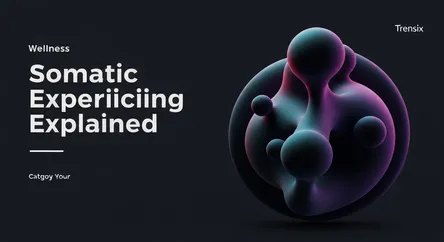Wellness
Somatic Experiencing Explained

A guide to somatic experiencing, a body-centric approach to healing trauma by releasing trapped stress and restoring the nervous system's balance.
What is it?
Somatic Experiencing (SE) is a body-focused therapeutic approach for healing trauma and other stress disorders. Developed by Dr. Peter A. Levine, it is based on the idea that trauma gets trapped in the body, leading to dysregulation of the nervous system. Unlike traditional talk therapies that focus on thoughts and memories, SE works directly with the body's physical sensations—often referred to as the "felt sense." The goal is to gently guide individuals to notice their physical responses to stress and allow their bodies to complete self-protective motor responses that were frozen during a traumatic event.
Why is it trending?
There is a growing cultural awareness of the mind-body connection and the physical impact of trauma. People are increasingly seeking holistic and alternative healing modalities that go beyond conventional talk therapy. Somatic Experiencing has gained popularity as a non-invasive, gentle method that empowers individuals to be active participants in their healing journey. Its focus on building resilience and self-regulation without needing to re-live traumatic events makes it an appealing option for many seeking to resolve symptoms of PTSD, anxiety, and chronic stress.
How does it affect people?
Somatic Experiencing helps individuals develop a greater capacity to manage stress and self-regulate their emotions. By processing trauma held in the body, people often report a reduction in anxiety, depression, and hypervigilance. They learn to recognize and release physical tension, leading to improved sleep, reduced chronic pain, and a greater sense of calm and well-being. The practice helps restore the nervous system to a state of balance, allowing individuals to feel more present, grounded in their bodies, and resilient in the face of life's challenges.